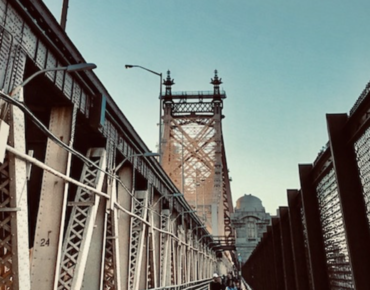AI Aimed at Bridging Infrastructure Maintenance Gap

Crumbling infrastructure is getting a closer look with a new deep learning tool billed as providing live, 3D views of bridges and tunnels along with automatic alerts that would allow maintenance managers to identify and fix faults before they escalate into a failure.
The AI tool from Israeli startup Dynamic Infrastructure creates “medical records” for individual bridges, tunnels and elevated roadways based on existing images and periodic inspections. The sources of those images range from smartphones and drones to laser scanning.
The image collection akin to MRIs on humans serves as the basis for alerts about changes in the condition of roadway infrastructure that require maintenance. The idea is to use these diagnostic tools to stay ahead of problems before they lead to a failure.
The startup said its proprietary deep learning technology compares archived with the latest images to spot defects and other maintenance issues. The cloud-based system is designed so information can be accessed via browser and shared with engineers and maintenance crews.
Dynamic Infrastructure, which also has offices in New York, said this week it is working with infrastructure managers in the U.S. and Israel as well as Germany, Greece and Switzerland. Those stakeholders oversee about 30,000 bridges and tunnels.
The deep learning tool is among a growing list of platforms being pitched to transportation agencies coping with aging infrastructure. In the U.S. alone, nearly 50,000 bridges are considered structurally deficient or in need of urgent repair. Meanwhile, federal efforts to rebuild aging U.S. transportation infrastructure have largely stalled.
"The world faces an infrastructure crisis,” said Saar Dickman, co-founder and CEO of Dynamic Infrastructure. "Deficient bridges and tunnels represent a severe infrastructure challenge in the U.S. and worldwide and their poor condition leads to life losses and millions in unplanned expenditures.”
The startup is pitching its imagery analysis approach as a way for managers to quickly pinpoint defects so they can dispatch repair crews before the problem leads to a bridge closure or worse.
That scenario is increasingly common. In Washington, DC, for example, deferred maintenance on the iconic Arlington Memorial Bridge between the Lincoln Memorial and Arlington National Cemetery led to periodic lane closures and a band-aid approach to maintaining the 87-year-old Potomac River crossing.
Only after transportation engineers warned of an imminent failure did lawmakers from Virginia secure the funds to overhaul the aging drawbridge. The $227 million rehabilitation project is expected to be completed in 2021.
Infrastructure woes also plague new transportation projects. The poster child for construction errors was the so-called “Big Dig” project in Boston. Similar problems have surfaced recently in the multibillion-dollar extension of the Washington Metrorail system. Construction issues include defective concrete panels at several stations and excessive curving of rail ties.
The need for new diagnostic tools to spot these and other infrastructure defects have been highlighted by several bridge failures in recent years, including the 2007 collapse of the I-35 Mississippi River bridge in Minneapolis.
Hence, startups such as Dynamic Infrastructure are pitching AI tools as a new decision-making tool that can spot and repair defects before a failures occur. “A single dollar of the right technology in the right place can save much more than one dollar of maintenance of a bridge,” asserted Dynamic Infrastructure CEO Dickman.
Related
George Leopold has written about science and technology for more than 30 years, focusing on electronics and aerospace technology. He previously served as executive editor of Electronic Engineering Times. Leopold is the author of "Calculated Risk: The Supersonic Life and Times of Gus Grissom" (Purdue University Press, 2016).










